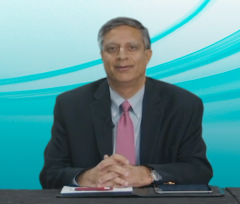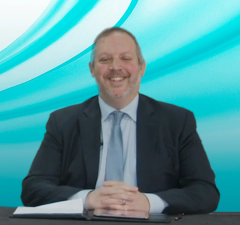
Treatment Approaches for Patients with Newly Diagnosed Multiple Myeloma
Experts discuss how they select a treatment regimen for a newly diagnosed multiple myeloma patient, and how they measure a successful treatment response.
Episodes in this series

Sagar Lonial, MD: We’ve got lots of great data, and there are other data beyond what the 3 of you have already talked about that we’re using to drive that decision. Jonathan, do you want to take us through how you make decisions in terms of what our treatment approach is for a patient newly diagnosed with myeloma? Everybody can comment or critique that decision.
Jonathan Kaufman, MD: We’ve had a lot of internal debate over the years about this. We felt very comfortable with the GRIFFIN data because the GRIFFIN control arm acted just like our large series. An improvement by adding daratumumab has driven that decision. The big debate we’ve had is whether we should have quadruplet therapy for all patients, or if it should be only the standard-risk or only the high-risk patients.
In terms of the standard risk, the vast majority of the GRIFFIN trial was standard risk. My perspective on this is that standard-risk patients should certainly have quadruplet therapy if we deem them to be transplant candidates at time of diagnosis. In terms of the high-risk patients, if you look at the updated GRIFFIN data looking at MRD [minimal residual disease] negativity, which we believe is our best marker for long term outcomes, the MRD-negativity data are better in high risk with daratumumab–RVd [lenalidomide, bortezomib, dexamethasone] compared with RVd [lenalidomide, bortezomib, dexamethasone]. Our initial feeling was that this might not be enough in high-risk patients, but I’m also using daratumumab–RVd [lenalidomide, bortezomib, dexamethasone], including for standard-risk patients.
Sagar Lonial, MD: Does anyone else want to add anything or comment?
Ajay Nooka, MD: There are more data pointing toward what Jonathan just talked about using daratumumab in the up-front setting in addition to the PI [proteasome inhibitor]–IMiD [immunomodulatory imide drug] backbone. Why not use a better proteasome inhibitor? That’s what the MASTER trial clearly showed. Except we continue the maintenance for a longer duration in high-risk patients. These patients are able to achieve those responses and maintain these responses with continued treatment. That’s what the approach has been.
Nisha Joseph, MD: For high-risk patients, I’m not routinely using daratumumab or quadruplets. I tend to use more carfilzomib-based strategies. But clinically, because we’re a referral center, we see a lot of folks who are already induced or have already gotten into 2 or 3 cycles with daratumumab or a quadruplet, and I certainly don’t change regimens at that point. Those patients do quite well and achieve a good depth of response.
Sagar Lonial, MD: Dr Joseph, 1 question that’s always out there that we all struggle with is when a patient is sent to us after having a line or 2 of therapy, what’s a good enough response following induction to say we’re ready to proceed with collection of cells and transplant? There’s this view that patients have to be in CR [complete response] before they’re referred to the transplant center. Do you want to talk about how we think about that?
Nisha Joseph, MD: Sure. Ideally, when we’re selecting induction strategies, we try to optimize that depth of response. But when we get a patient in our clinic who has already received induction therapy, speaking for everyone, we look for at least a partial response [PR], which is a 50% reduction in the amount of tumor burden from time of diagnosis.
There was a retrospective study looking at this question in over 500 patients with newly diagnosed myeloma who achieved less than a PR prior to transplant, and they were siphoned into 2 groups: those who receive salvage therapy before transplant and those who went directly to transplant. Even though in the salvage arm 70% of those patients deepened their response when they did multivariate analysis comparing patients who didn’t receive salvage therapy, there wasn’t a benefit in terms of risk of relapse, progression-free survival, or overall survival. Instead of trying to fiddle around to deepen that response, where you can risk relapse or increased toxicity, we tend to push forward with stem cell collection if the patient has at least achieved a PR.
Sagar Lonial, MD: That’s an important point. Because there are a lot of folks who say that if you haven’t achieved the depth you want, you change the treatment. The way I think about it is you give the induction that has the highest likelihood of achieving a deep response. But if you don’t get there, and you do get a response, then it’s reasonable to say that we know that transplant is a big hammer, and we don’t want to avoid that big hammer, we want to use that big hammer. The patients who historically don’t respond as well to induction are the patients who may have gained the greatest benefit from high-dose melphalan. You want to make sure you get that to them as part of the process.
Transcript edited for clarity.
Newsletter
Stay up to date on recent advances in the multidisciplinary approach to cancer.






















































































